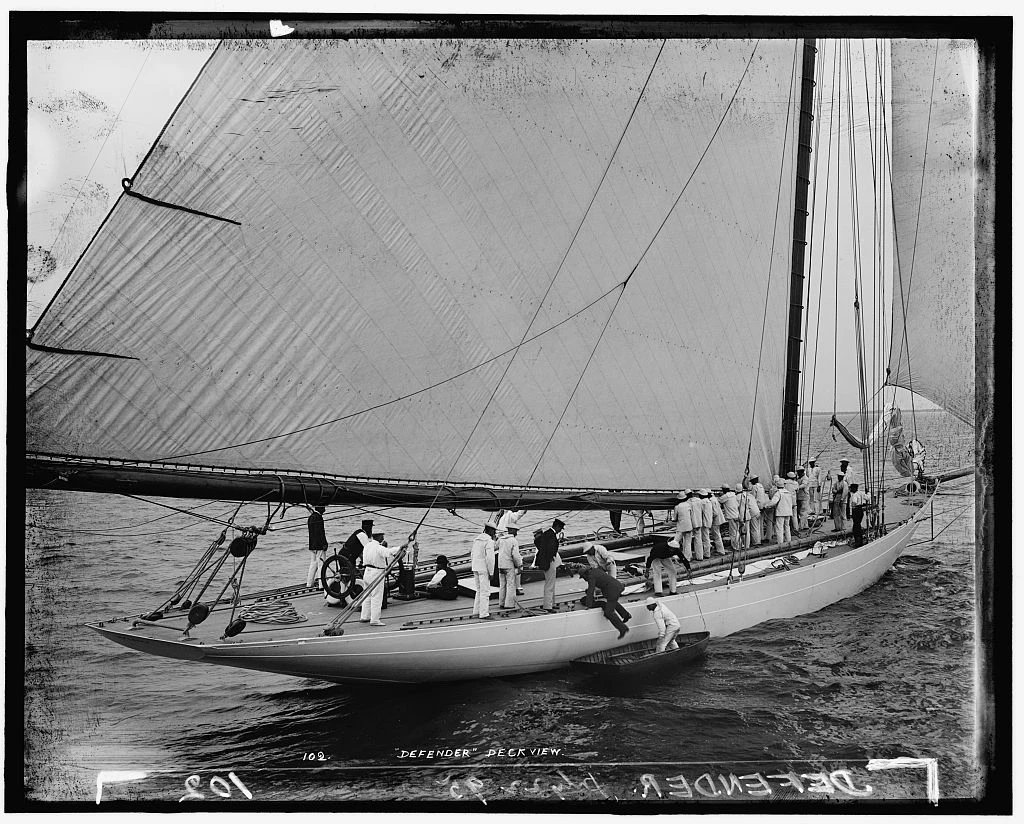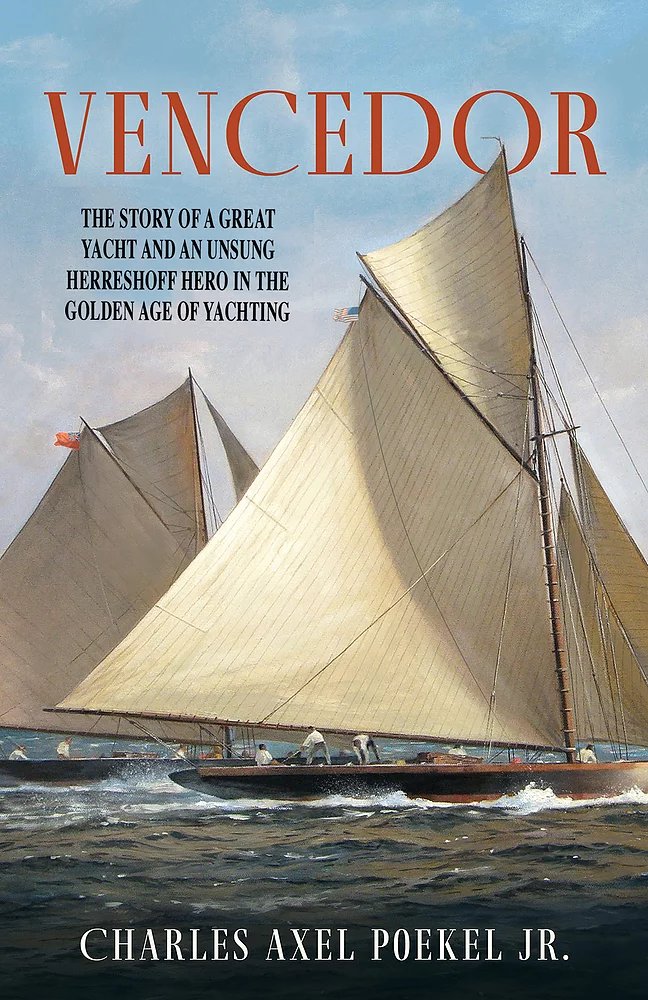New book challenges Herreshoff narrative
While Nathaniel Green Herreshoff took credit for his company’s designs, new research by a great-grandson of one of his draftsmen suggests there’s much credit due to others for much of the Herreshoff legacy
Author Charles Axel Poekel Jr. grew up hearing stories about his great-grandfather, Thorvald Julius Schougaard Poekel. A Danish-American naval architect, mechanical engineer, yacht designer, and …
This item is available in full to subscribers.
Please log in to continue |
Register to post eventsIf you'd like to post an event to our calendar, you can create a free account by clicking here. Note that free accounts do not have access to our subscriber-only content. |
Day pass subscribers
Are you a day pass subscriber who needs to log in? Click here to continue.
New book challenges Herreshoff narrative
While Nathaniel Green Herreshoff took credit for his company’s designs, new research by a great-grandson of one of his draftsmen suggests there’s much credit due to others for much of the Herreshoff legacy
Author Charles Axel Poekel Jr. grew up hearing stories about his great-grandfather, Thorvald Julius Schougaard Poekel. A Danish-American naval architect, mechanical engineer, yacht designer, and boatyard owner, Thorvald was Chief Draftsman for the Herreshoff Manufacturing Company (HMCO) in the 1890’s, and worked on several undefeated America's Cup defenders.
In fact, according to W.P. Stephens, yachting editor of Forest and Stream and Thorvald’s contemporary, "Poekel was the real designer of Vigilant, Gloriana, Niagara, and Defender. He was also one of Defender's best crew."
It’s a bit of a revelation, considering that the vast majority of HMCO designs are credited to one man: Nathaniel Greene Herreshoff.
According to Charles, he and his wife Lynn were in Bristol about 10 years ago, when they stopped at the Herreshoff Marine Museum. Knowing that his great-grandfather spent some of his career with HMCO, Charles asked about what kind of records the museum might have. The HMM staff returned to tell Charles that they did not have any records of Thorvald working on staff.
“That got me interested in digging a little deeper, and finding out more,” said Charles, who then reached out to Kurt Hasselbalch, Curator of the Hart Nautical Collections at MIT. Hasselbalch responded that, which they have very complete records on most of the yachts designed and built during that period, they really did not have much on any of then personnel who worked at the HMCO those many years ago.
Hasselbalch did, however, find the signature T.Sch. Poekel on 4 or 5 sets of construction plans, including those for Vigilant and Defender. Hasselbalch also arranged to have Thorvald’s toolbox, now owned by Charles, included in an exhibition at the MIT Museum entitled: “Herreshoff—Lighter, Heavier and Faster.” The description reads “T.S. Poekel was one of many highly skilled draftspeople and engineers at HMCO. Although workers’ names rarely appeared on early plans, Mr. Poekel’s is visible on the lower right of Defender’s construction drawing, His handwriting can also be found on the Newport 30 plan. Poekel later became a successful yacht designer in his own right.”
After 9 years with HMC, Thorvald was recruited by the Racine Boat Manufacturing Compony in Racine, Wisconsin, becoming superintendent, and, according to Charles, taking 12 HMCO employees with him. There was apparently some hostility following his departure. According to Charles, when the Milwakee Sentinel ran a story highlighting some of Thorvald’s accomplishments, the HMCO responded with a a letter suggesting he was just a go-fer, not a proper naval architect. “The Herreshoffs slammed him,” Charles said.
Charles notes that his great-grandfather was not the only unsung hero who worked at the HMCO and never got the credit they deserved. He names individuals including Darwin Almy who started his own boiler company after he patented a boiler; John F. Duthie who became a major boatbuilder in Seattle; and A. A. Packard who after helping to design the Columbia, joined forces with aviation pioneer Starling Burgess.
Thorvald soldiered on, and would make a name for himself in Racine. Drawing inspiration from what he learned from working with Nathaniel Greene Herreshoff, he designed and built one of the most famous racing sloops in the history of the country, Vencedor, bringing world-class yacht racing to the Great Lakes.
“He also designed and built a 145-foot steamer that was one of the largest and most luxurious yachts to ever sail the lakes,” writes Charles in the preface of his book. “He also perfected the Herreshoff boilers and designed other marine machinery. His accomplishments form the basis of this book.”
Vencedor, by Charles Axel Poekel Jr., is published by Sheridan House and runs 271 pages. Released on Sept. 1, it is available online and will be carried locally by Paper, Packaging and Panache in Bristol, as well as Charter Books in Newport. There are two upcoming book signings, both scheduled for Oct. 16. Charles Poekel will be at the Sippican Historical Society, 139 Front St., Marion, Mass., from 10 a.m. to 1 p.m.; and at Charter Books, 8 Broadway in Newport, from 3 to 5 p.m.









